The outdoor walkways of the Roybal Learning Center offer a panoramic view of the Los Angeles skyline that would be a fitting backdrop for any Hollywood movie.
That’s what grabbed Jaison Noralez when he visited the downtown high school last year. A sophomore this fall at Roybal’s celebrity-backed Film and Television Production Magnet program, he’s training to become part of the next generation of behind-the-scenes movie professionals: sound and lighting technicians, make-up artists and other production staff who never appear in front of a camera.
On a recent Wednesday, he and classmate Aiyanna Randolph worked on a concept for a post-apocalyptic science fiction feature set in the year 2053.
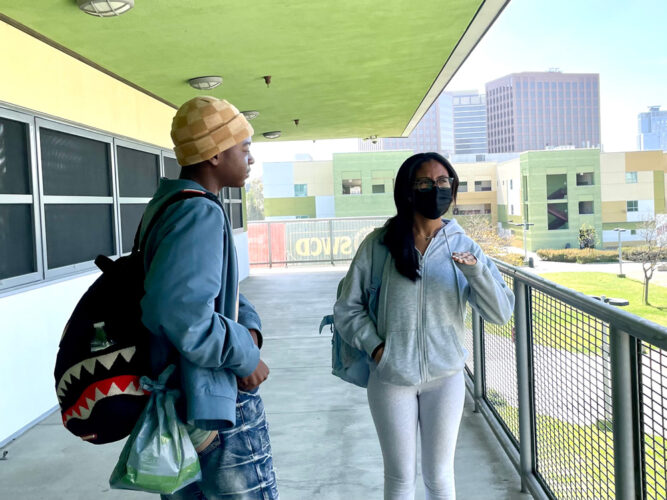
“It’s not writing a script. We’re designing the set, make-up, hair and costumes,” he said about their assignment in Brittany Hilgers’s first period film production class. “She wants us to understand how those aspects could affect the movie. If you’re in a horror movie, you wouldn’t wear a bright dress or something. That wouldn’t match up.”
Launched last fall, the program opened with the fanfare of a blockbuster premiere, with Los Angeles Unified Superintendent Alberto Carvalho joining actors George Clooney, Don Cheadle and Mindy Kaling. Studios, networks and streaming services like Amazon and Disney have put up $4 million to launch the program, but leaders know that to keep it going, they’ll need sustainable public funding.
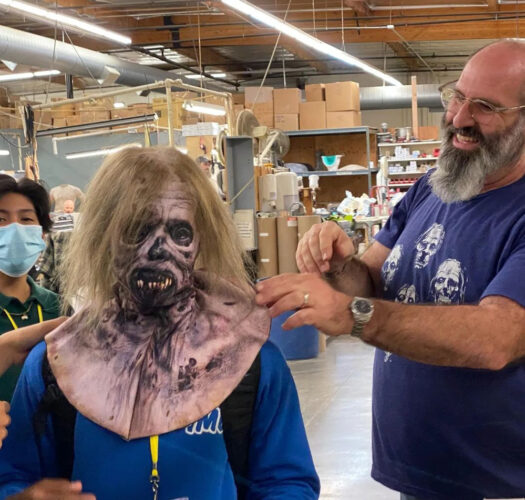
The goal is to give Black, Hispanic and Asian students who might lack the right connections to break into Hollywood a pathway into good-paying jobs in the industry and make them “part of the machinery of storytelling,” said Bryan Lourd, Clooney’s agent and an executive at Creative Artists Agency.
Traditionally, in entertainment, “it’s who you know and who … gives you just enough of a vocabulary to get into it,” said Lourd, a member of the magnet program’s advisory board. “George called me and said, ‘Shouldn’t we do something?’ ”
Before he resigned in 2021, then-L.A. Superintendent Austin Beutner connected them with Roybal Principal Blanca Cruz and her staff. At the time, the school had a fledgling music and film production magnet program, but lacked resources to give students real-world experience.
“We wanted to do something that wasn’t available in the immediate area,” Cruz said, “We knew nothing about the industry.”
But now she exposes students to those who do. During Hilgers’s first period class, Cruz popped in to announce that the following week, students would spend the day at the Universal Studios Hollywood backlot and tour the local NBC affiliate.
“You can see what behind the scenes of a broadcast looks like,” she said.
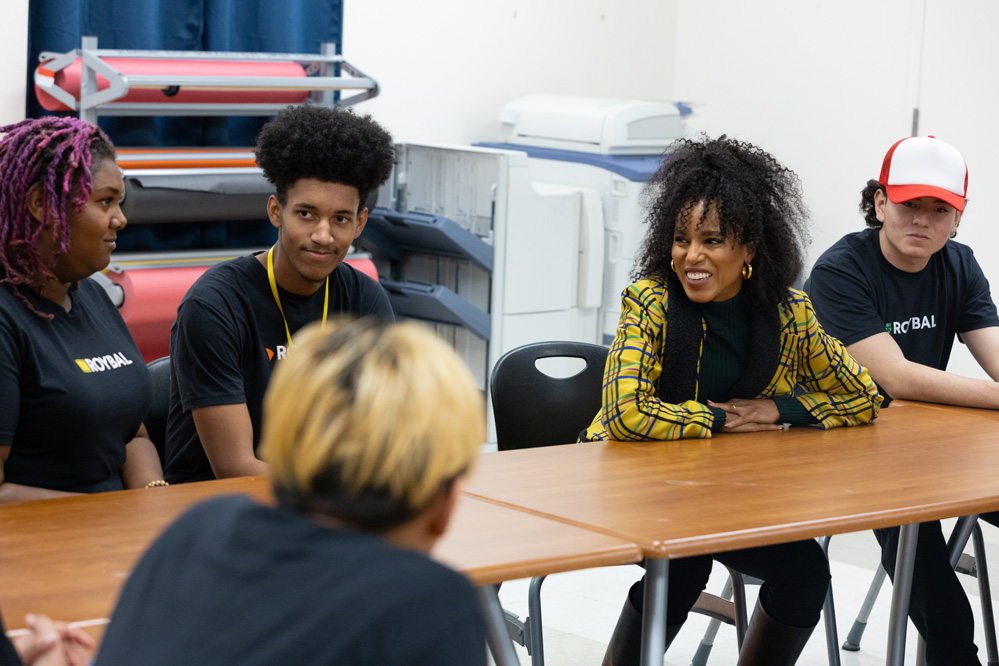
The school’s faculty includes teachers with strong industry credentials. Hilgers is a former production assistant and screenwriter whose resume includes movies like “Jerry McGuire” and seven seasons of the comedy-crime drama “Psych.”
In her lesson for the day, she told students they could make a diorama, digital presentation or moodboard — a poster that displays the setting and feel of a film — to display their concepts for a story set after a catastrophe wipes out most of civilization. She offered an example of a moodboard from the Netflix period drama Bridgerton, a collage with photos of furniture and clothing styles typical of the early 1800s.
“This designer probably researched that time frame quite thoroughly,” she told them.
This year, students made fake movie trailers and wrote, produced, filmed and edited a horror adaptation of “The Wizard of Oz.” In the process, they learned technical skills such as cinematography and where to position a boom mic to pick up voices.
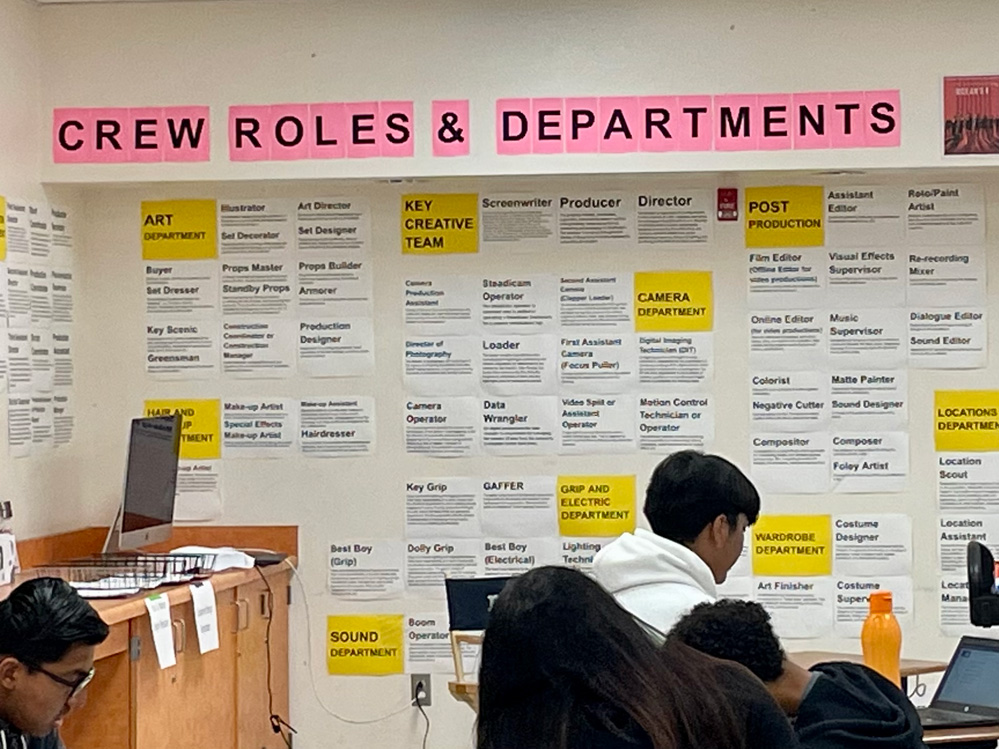
Next year, the school will add a studio, courtesy of AVID, an editing software company. Post-production is one of three concentrations students can pick for 11th and 12th grade, along with technical and craft areas.
The school will match students with mentors in the industry and eventually develop an apprenticeship program to give them early experience in their chosen field. The goal, said Deborah Marcus, who manages education efforts at Creative Artists, is for graduates to not only land their first job on a crew, but their second and third as well.
Aiyanna applied for the program after her mother saw an article about it.
“She was like … ‘I’m gonna sign you up right now.’ I guess she wanted me to have something going for me,” she said. “The people who run it, like the actors Mindy Kaling and George Clooney, those are like big people.”
‘A lot of hard work’
Those already in the field know students’ future success hinges on more than technical knowledge or creative ability.
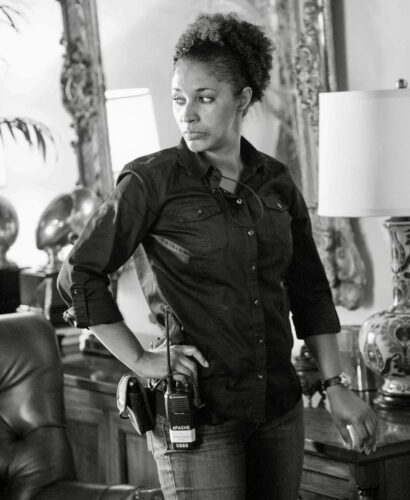
“I tell production assistants all the time: ‘Half of your position is personality. The other half is skill,’” said Frankie Pagnotta, first assistant director of “Abbott Elementary,” the hit ABC sitcom about teachers in a Philadelphia school.
Pagnotta graduated from Streetlights, a Los Angeles nonprofit that runs a private school with a mission similar to Roybal’s — diversifying the entertainment industry. Now, she mentors young Black production assistants, urging them to be early on set, know their way around the city and not get distracted by talking to friends on the job.
She said she’s worked with a range of young people, from those who balk at menial tasks like passing out call sheets to children of successful directors who are still hungry to prove themselves.
“It’s a lot of hard work,” she said, “and someone is not going to just hand you a career.”
The magnet program generated lots of favorable buzz at Roybal this year, but like many film characters, the school has a complicated backstory.
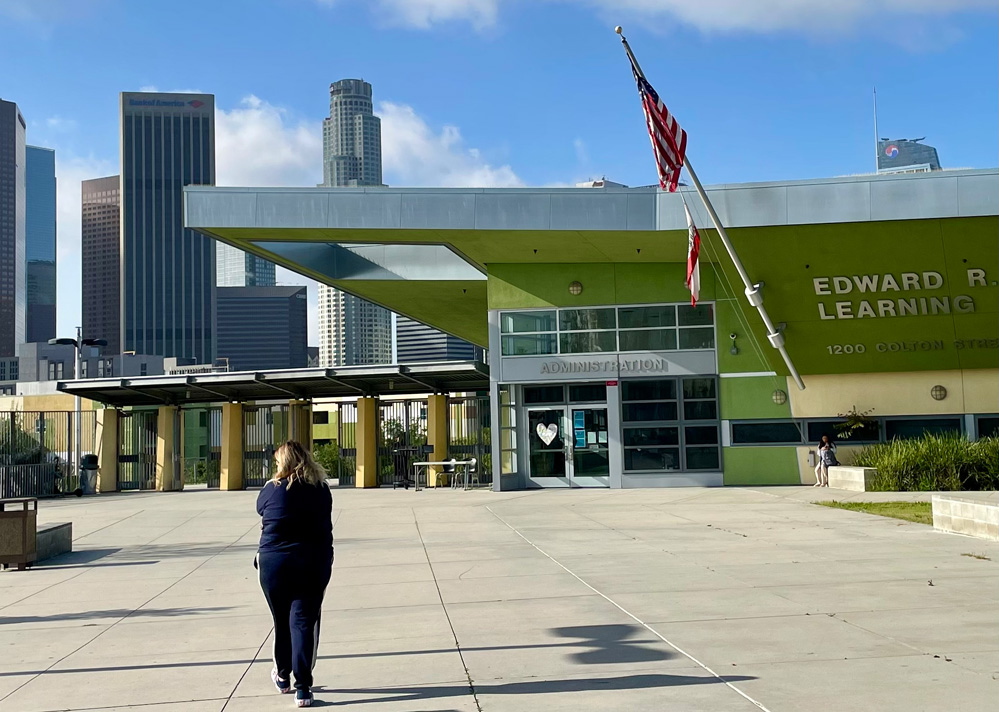
The former Belmont Learning Complex sits between two major Los Angeles freeways, atop an abandoned oil field and an earthquake fault. Beset by numerous delays and investigations over potential health and safety hazards, the cost of the project ballooned to nearly $400 million.
The fiasco prompted then-mayor Richard Riordan to support a slate of school board members who ousted the superintendent. When it finally opened in 2008, more than 10 years after construction began, the school was renamed for Edward R. Roybal, the first Latino city councilman in Los Angeles who later served 30 years in Congress. Other programs at the school focus on careers like social work, business and computer science.
Today, the boxy green and tan facility — with its grassy quad and views of the city’s skyscrapers — figures prominently in student-made videos. U.S. Education Secretary Miguel Cardona holds up the new magnet program as a model for other districts.
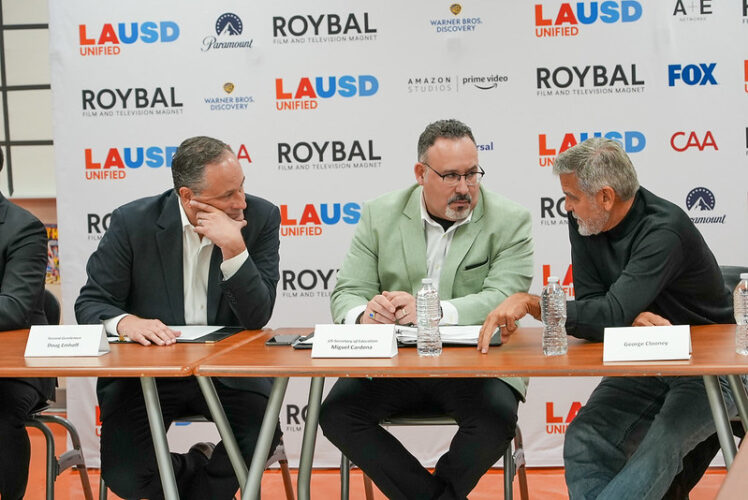
“I’m asking superintendents … to learn Roybal’s example,” he said in March during a panel discussion at SXSW Edu. He visited the school in January with second gentleman Douglas Emhoff and said he wants schools in production hubs like New York, Chicago, Miami, Atlanta to replicate the magnet’s model.
In California, magnet schools don’t receive more funding than traditional schools, despite higher costs for specially trained teachers and industry-specific equipment and facilities. At Roybal, the initial funding from Amazon Studios, Fox Corp., Paramount and other entertainment companies pays for a managing director who serves as a liaison between the school and the studios. A program coordinator plans events like field trips and master classes taught by professionals.
The partners also hired a curriculum consultant and are developing online lessons to share with students around the world. But in another year, they’ll need to secure future funding. Cardona noted that the Biden administration’s 2024 budget proposal includes $200 million to support “career-connected learning.”
For now, Jaison and Aiyanna are soaking up as much as they can. Jaison is an aspiring animator who already knows how to edit manga panels — the comic book style that originated in Japan.
Aiyanna said she’s “sampling” and wants to learn all aspects of the business, but is leaning toward writing.
Despite its entertainment focus, the program doesn’t ignore traditional high school content. Hilgers and an English teacher collaborated on a project inspired by The History Channel in which students researched female poets and made 30-second documentaries about their work.
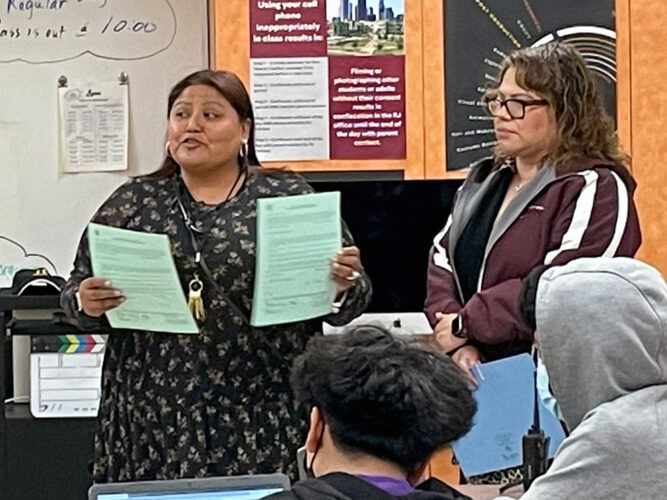
“Say you’re doing a horror film, and [a character has] a deep cut. You want to have the right body parts in place,” he said. “You need to know about science to make a science film.”
When Lourd and Clooney visited the school, they observed a math lesson based on production budgets and the daily cost of making a film like “Black Panther.”
Lourd said, “George and I were standing there saying, ‘I wish I’d gone to this high school.’ ”
Get stories like these delivered straight to your inbox. Sign up for The 74 Newsletter


